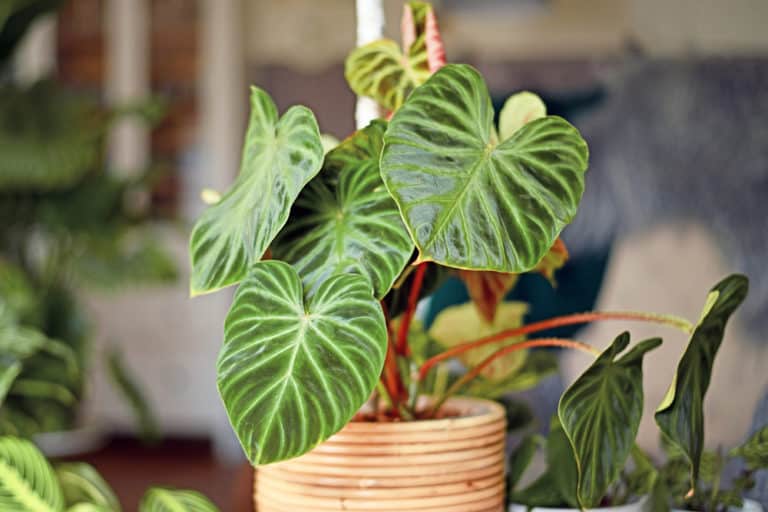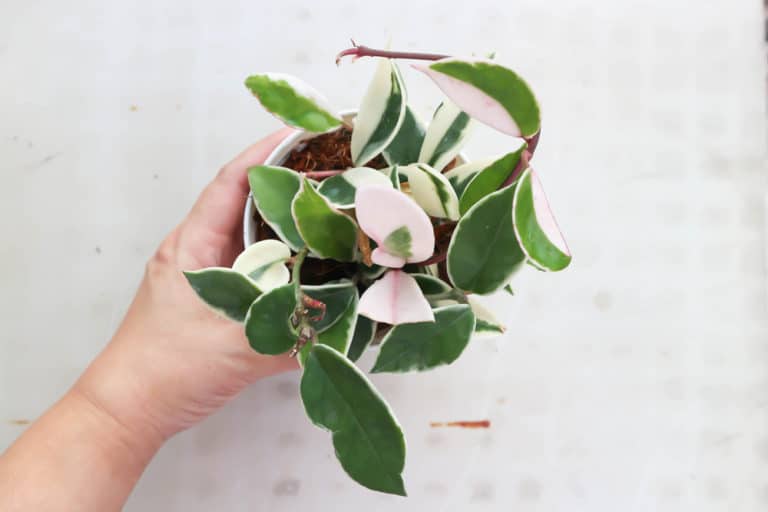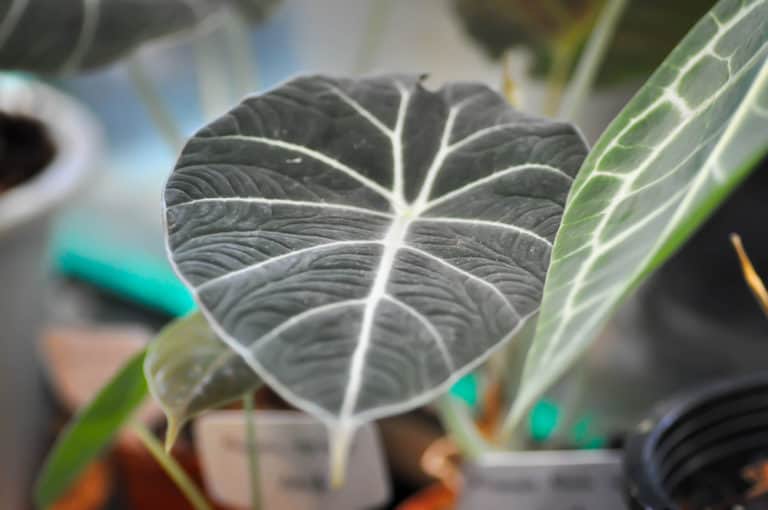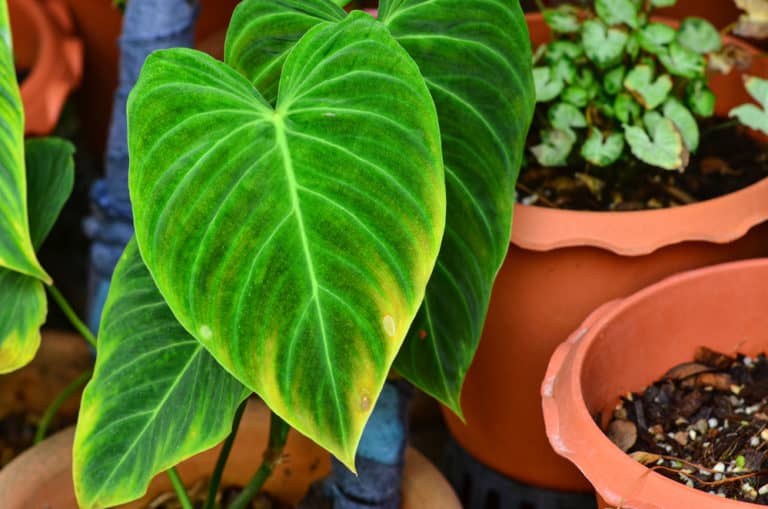Pilea Peperomioides ‘Chinese Money Plant’ Care Guide (2024)

The Chinese money plant, or Pilea peperomioides, is the hot new plant for indoor growers everywhere.
While it’s been known for a century or more, it’s only really taken off in the last 5 years, thanks to Instagram.
Its sleek good looks and easy care have made it the must-have houseplant of the 2020s.
| Scientific Name | Pilea peperomioides |
| Common Name | Chinese Money Plant, Missionary Plant, Pancake Plant |
| Light | Bright indirect sunlight |
| Watering | Water if the top half of the soil is dry |
| Temperature | 60 to 85ºF (15 to 30ºC) |
| Hardiness Zone | 9b to 11b |
| Humidity | 40 to 50% |
| Soil Type | Rich, quick-draining, loamy |
| Soil pH | 6.0 to 7.0 (mildly acidic to neutral) |
| Fertilizing | A balanced feed once a month in spring and summer |
| Repotting | Every year |
| Pruning | Beginning of the growing season |
| Propagation | Divisions or stem cuttings |
| Toxicity | Not toxic to humans and pets |
| Mature Size | 12 inches as a houseplant |
| Bloom Time | Spring |
What’s Unique About Chinese Money Plant?
Chinese money plants are native to South China, where they grow at the foot of the Himalayas.
The Chinese money plant came to Europe in 1946 when a Norwegian missionary brought a plant home.
It spread as it was shared with friends and family. Finally, in the late 2010s, it was available commercially, and the rest is social media history.
Growing Chinese money plant is incredibly easy; even beginners will have no trouble with this tolerant houseplant.
The small size and perky appearance of the Chinese money plant makes it perfect for modern city living.
As well, the simple round shapes and bright green color of the leaves lend themselves to contemporary minimalist decor.
Chinese Money Plant Care
For good Chinese money plant care, it’s important to understand its native environment.
The Chinese money plant originates in forests along the southern edge of the Himalayas, growing in the crevices of limestone boulders under the shade of trees.
You should have no trouble with appropriate Pilea peperomioides care if you keep it in a bright location with fairly high heat and moderate humidity.
Light
In its native home in temperate forests, the Chinese money plant grows in the shade of the tree canopy.
As a result, Chinese money plant light requirements are for bright but indirect light, or between 10,000 to 20,000 lux.
Pilea peperomioides light needs aren’t difficult to satisfy in your home. If you’ve got a north or east window, you can keep your Chinese money plant on the window ledge.
However, if all you have are south or west exposures, do your Chinese money plant a favor and place it away from the full sun.
Avoid overly shady spots. This plant really needs bright indirect light to grow its best.
Watering
For appropriate Chinese money plant watering, consider how these plants grew in their native environment.
These little plants grew in the crevices of granite boulders, in scant amounts of earth that drained quickly.
To water Pilea peperomioides properly, you should wait until at least the top half of the soil has dried out. If the leaves start to wilt just a bit, it’s definitely time to water.
Give it a good soaking and let all the excess water drain away.
Your Chinese money plant’s watering needs are best met with distilled or rainwater, since the calcium in hard water or salts in softened water can be a problem.
Temperature
The Chinese money plant may be a native of the Himalayas, but it’s from the southern end of that range.
Even in winter, the average daytime temperature is 65ºF (18ºC) while in summer, it’s used to highs of 80ºF (28ºC).
The Chinese money plant temperature range is between 60 to 85ºF (15 to 30ºC). You should be easily able to provide an adequate temperature for Pilea peperomioides.
However, the Chinese money plant does have some temperature tolerance below that range, and may in fact have some frost hardiness.
While it may not grow as quickly or produce as large leaves, some growers have reported being successful at overwintering Chinese money plants outdoors.
Humidity
When it comes to your Chinese money plant humidity requirements, more is not better.
The ideal humidity for Pilea peperomioides is about 40 to 50%.
You should probably be able to grow your Chinese money plant without having to increase the humidity around the plant.
However, it is important to keep it away from the direct blasts of either heat or air conditioning, as both can dry out the air.
If your home’s humidity level falls much below 40%, placing a pebble tray filled with water under its pot should suffice.
Avoid spraying the leaves as that can foster fungal or bacterial disease.
Soil
The best Chinese money plant soil is very loose and porous, while still having lots of organic matter to maintain moisture levels.
The pH level for Pilea peperomioides is 6.0 to 7.0, or mildly acidic to neutral.
You can easily make your own soil for Pilea peperomioides. A mixture of peat moss with a bit of perlite added to it will be a good, well-draining soil.
If you want, you can buy a standard potting soil mix and mix an equal quantity of cactus soil with it, and then throw in a handful of perlite to further loosen it up.
Fertilizer
You should use a Chinese money plant fertilizer once a month during its growing season to ensure strong, healthy growth.
It’s easiest to use a liquid fertilizer for Pilea peperomioides, with a fertilizer ratio of 10-10-10.
Dilute it to half the recommended strength, and apply evenly to the soil surface shortly after you’ve watered your Chinese money plant.
If you see a white crust on the surface of the soil, you have got a build-up of fertilizer salts.
Take your Chinese money plant pot to the sink, and run a steady stream of water through the soil for about ten minutes. That should flush out the excess fertilizer.
Potting & Repotting
You will probably find that Chinese money plant repotting is necessary about once a year.
This plant grows quickly and produces lots of plantlets, so the pot will soon become crowded.
When repotting Pilea peperomioides, don’t put it in a much bigger pot; just go up one pot size at a time.
An unglazed clay pot will help regulate soil moisture. It’s also really important that the pot has good drainage.
Always use fresh potting soil. In fact, after it reaches its full size, you may keep it in the same pot but should still give it new soil once a year.
Pruning
Chinese money plant pruning should be done on a very limited basis, because you don’t want to interfere with the natural rounded look of this plant.
However, cutting Pilea peperomioides can be done if you want to keep it bushy and short.
You can trim off a lot of the stem and see vigorous new growth very quickly. Just make sure you cut above at least a few leaves to ensure its survival.
That top can be rooted to start a whole new Chinese money plant, too.
Trim off old leaves as they die off to keep the plant looking its best.
Propagation
Chinese money plant propagation is really easy; in fact, the plant does most of the work for you!
It’s sometimes called the friendship plant because it’s so easy to give new plants to friends and family.
Chinese money plants readily grow multiple plantlets or pups around the edges of the mother plant.
You do not need to wait for repotting to propagate Pilea peperomioides, as it is easy to separate the plantlets from their mother.
When you see new pups that are 2 or 3 inches tall, you can dig down with a sharp knife and carefully cut the root joining the two together.
Then, it’s a simple matter of planting your new baby Chinese money plant in its own pot, to give away or keep for yourself!
Common Problems of Chinese Money Plant
The good news about Chinese money plant problems is that there aren’t many at all.
In fact, most problems with Pilea peperomioides can be prevented through providing it with proper growing conditions.
However, if you see drooping or damaged leaves, track down the problem as soon as possible to ensure the recovery of your precious Chinese money plant.
Pests
There is no houseplant that is guaranteed pest-free, and Pilea peperomioides is no exception.
However, you can deter Chinese money plant pests by spraying or wiping down the leaves once a month with an insecticidal soap or neem oil solution. This should keep the bugs away.
Mealybugs can be found on the stems or under the leaves, looking like tufts of cotton. They can be wiped off with a cotton ball soaked in rubbing alcohol.
Scale insects resemble small brown bumps on the stems or leaves. Scrape them off gently.
Spider mites are rarely seen, but they leave their webs as well as yellow bumps on the leaves. Spray them off with a sink or shower nozzle.
Diseases
You really shouldn’t have many issues at all with Chinese money plant diseases.
However, your Pilea peperomioides may develop root rot if it is kept in too-wet soil.
The first signs of root rot are yellowing leaves and mushy stems. If you pull the root ball out of its pot, you will probably see black, bad-smelling roots.
If you’re lucky, the fungal infection will not have spread throughout the entire plant yet. Cut off all affected roots, stems, and leaves, and dispose of them in the garbage.
Then, replant your Chinese money plant in fresh soil and a disinfected pot.
Growing Problems
If you don’t give your Chinese money plant the conditions it needs to thrive, you will end up with growing problems. Luckily, fixing the issue will cure your sick plant.
Leaves curling inward, creating a cupped shape, can mean too much or not enough light. You will have to assess its situation and adjust its location accordingly.
Curling leaves can also be a sign that your Chinese money plant is in too hot a spot.
Crispy brown spots on the leaves could be an indication of too much direct light, or too much fertilizer.
On the other hand, if leaves are turning yellow but the soil isn’t too wet, you may need to increase the amount of fertilizer you’re using.
Toxicity of Chinese Money Plant
Pilea peperomioides is not toxic to humans or animals.
Because it has no toxicity, you can feel safe growing a Chinese money plant in a home with children or pets.
However, as a general rule of thumb, it’s best to discourage kids and animals from direct contact with your houseplants.
For Humans
Chinese money plants are not at all toxic to humans.
You do not need to take any precautions when handling the plant to prevent rashes.
Even if children eat the leaves, they will not suffer an adverse reaction from the foliage.
However, you may be using insecticides on your Chinese money plant, and also applying fertilizer to the soil.
It’s best to protect your children from those substances.
As well, children can’t easily distinguish between which plants are safe and which ones are not. Err on the side of caution and teach your children early that plants are for looking at and not handling.
For Pets
Chinese money plants are completely non-toxic to pets.
However, that does not mean that you want your cat or dog eating the leaves.
In the first place, it can seriously damage your precious Chinese money plant. Cats especially can tear apart a plant if they’re bored.
Secondly, cats and dogs are carnivores, and their digestive systems simply cannot handle much vegetative matter.
They can end up with vomiting and diarrhea for several hours if they eat too much. It won’t threaten their life, but it will be very unpleasant.
Keep plants out of reach of animals to prevent situations like this.
Chinese Money Plant Appearance
The Chinese money plant appearance is fresh and simple, with its round, flat leaves bobbing on the end of their long petioles.
The plant naturally forms into a bushy, round clump that will never get too large for even a small apartment.
While not everyone sees their Chinese money plant flower, the delicate sprays are an elegant addition to its classic appearance.
Foliage
The prolific foliage of Chinese money plant is what gives it its most common name.
The round, coin-shaped leaves are thick and leathery, with a glossy finish. They are either completely flat or curve inward slightly.
A leaf can grow to 4 inches across.
Each leaf is attached to the main stem by a long, slender petiole, and there’s a cute little white dot on the front of every leaf where it’s attached.
The leaves are a lovely fresh green, and the petioles are a light green.
You should wipe down the evergreen leaves once a month to keep them looking their best.
Flowering
Chinese money plant flowering does occur, but the Pilea peperomioides flower lasts for a few weeks only.
Blooming will happen in spring on plants that have been exposed to cold temperatures over the winter.
In other words, if you keep your Chinese money plant in your warm heated home all winter, you will get beautiful leaves, but are unlikely to see any flowers.
If you want to get your Chinese money plant to flower, you should move it to a cool location for a couple of months in winter, and then bring it back out at the beginning of spring.
Then, you may get to see the delicate sprays of flowers on long, arching stems.
Size and Growth
While the normal size of Chinese money plant is about 12 inches, some growers have plants twice that height. They have a spread of about 20 inches.
Petioles sprout at intervals from the thick central stem, which over time becomes hard and woody.
Chinese money plants have a fairly rapid growth rate, and can easily double their size each year.
Chinese money plants grow into a natural round form, but you need to help it along.
They will very quickly grow in the direction of the strongest light, so give the pot a quarter turn every week for an even appearance.
Chinese Money Plant Fragrance
There is no Chinese money plant fragrance. Even the flowers that sometimes appear have no scent, as it is self-fertilizing and does not need to attract insects for pollination.
However, that lack of fragrance makes Chinese money plant a more versatile choice for a variety of public and private settings. Many people have sensitivities or allergies to strong scents.
If you live in a small apartment or tiny home, Chinese money plant is a great choice, as it never gets too large. Because it doesn’t have a fragrance, you will never be overwhelmed by a heavy scent in a confined space.
Suggested Uses for Chinese Money Plant
All you have to do is check Instagram to see the many ways you can use a Chinese money plant in your decor.
Its clean, modern lines make it ideal for contemporary spaces, and the bright green color will pop against white interiors.
Indoors, find a spot where your Chinese money plant will be on display. This little beauty is all about the looks, because it’s too small to be much good as an air purifier.
You can move your Chinese money plants outdoors for the summer, where they will thrive in the warm weather. As well, because they have some resistance to cold, you don’t have to worry about rushing them back in.
FAQ
What is Chinese money plant?
The Chinese money plant is a native of South China where it grows at the foot of the Himalayas. It has recently become a very trendy houseplant.
How to identify Chinese money plant?
The Chinese money plant has round, stiff medium green leaves up to 4 inches across, growing on a small, bushy plant with a rounded shape.
How to care for Chinese money plant?
The Chinese money plant should be grown in bright, indirect light in well-draining soil which is kept fairly dry, and kept in a warm environment with moderate humidity.
How to grow Chinese money plant indoors?
The Chinese money plant can be grown indoors in a warm, bright space with normal humidity levels, in porous soil with monthly feedings during its growing season.
How to grow Chinese money plant outdoors?
Chinese money plant can be grown outdoors year-round in zones 9b to 12, although some growers have reported that it will come back after cold winters.
How fast does Chinese money plant grow?
Chinese money plant has a rapid growth rate and can double its size every year under good conditions. It will reach its full size after 5 years.
How tall does Chinese money plant grow?
Chinese money plant usually grows to 12 inches tall with a spread of 20 inches, although some plants have reached as high as 24 inches.
How to make Chinese money plant grow faster?
The Chinese money plant will grow its fastest when placed in bright, indirect light out of the full sun, with regular fertilization and high heat.
How to stake Chinese money plant?
The Chinese money plant does not usually need to be staked. It will naturally form an erect, bushy shape, but should be rotated once a week to prevent it from developing a lean.
How to pot Chinese money plant?
The Chinese money plant should be potted in loose, porous soil with plenty of organic matter, in an unglazed clay pot with good drainage holes.
How to revive Chinese money plant?
If your Chinese money plant has dried out, give the pot a good soaking in a pail of water before letting the excess drain out. Gently loosen the soil to improve drainage.
Why is my Chinese money plant dying?
If your Chinese money plant has yellow leaves, mushy stems, and black roots, it has root rot. Cut off all affected parts and replant in fresh soil.
Why is my Chinese money plant drooping?
Your Chinese money plant may be too dry or too wet. Check the soil moisture and either repot it in fresh, porous soil or soak the pot to thoroughly moisten the soil.
How cold can Chinese money plant tolerate?
The Chinese money plant prefers to grow between temperatures of 60 to 85ºF (15 to 30ºC), but will tolerate temperatures down to freezing without being killed.
How to get rid of pests on Chinese money plant?
Most Chinese money plant pests can be deterred by wiping down the leaves on both sides every month with an insecticidal soap or neem oil solution.
Is Chinese money plant toxic to cats?
No, Chinese money plants are not toxic to cats. However, if cats eat too much vegetative material, they can suffer gastrointestinal upset, causing vomiting and diarrhea.
Is Chinese money plant toxic to dogs?
No, Chinese money plants are not toxic to dogs. However, dogs are naturally carnivores and have some trouble digesting vegetation, which can cause vomiting and diarrhea.
Is Chinese money plant toxic to children?
No, Chinese money plants are not toxic to children. However, the chemicals used on houseplants can be toxic, so it’s best to deter children from handling plants.
Is Chinese money plant toxic to humans?
No, Chinese money plants are not toxic to humans. You do not need to take any precautions when watering, pruning, or otherwise maintaining these plants.
Does Chinese money plant have a scent?
No, Chinese money plants have no scent. Neither the flowers nor leaves have any fragrance, making them suitable for use in any public or private setting.






